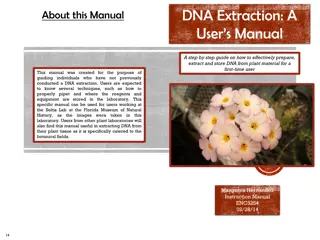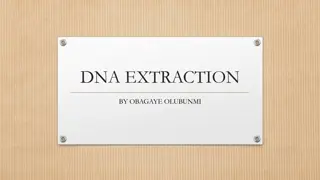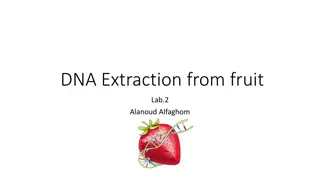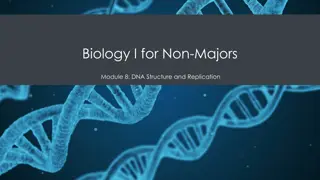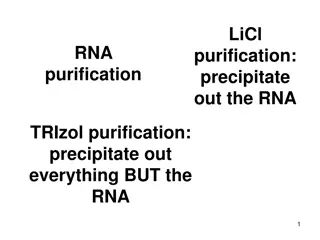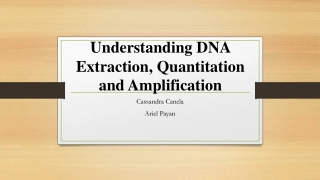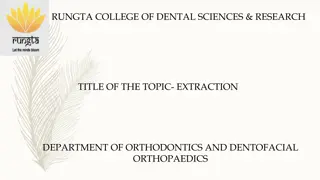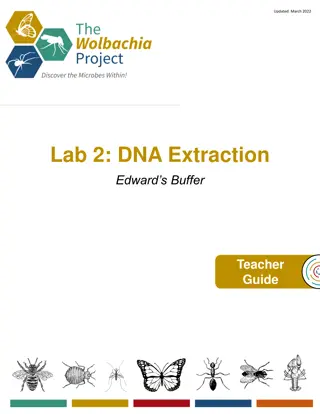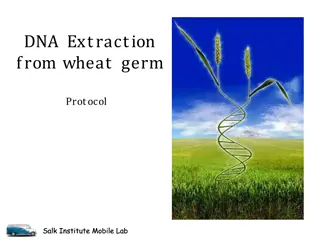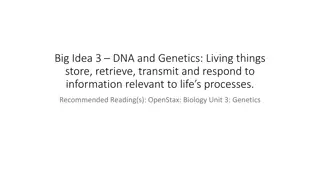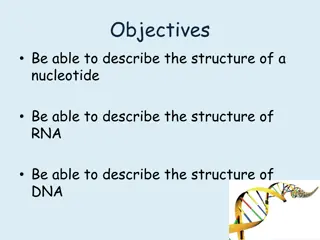DNA Extraction from Blood: Methods and Protocol
Studying DNA is crucial for disease prevention, diagnosis, and treatment. This guide provides a step-by-step protocol for extracting DNA from blood, involving procedures like cell lysis, protein and RNA removal, DNA precipitation, and final nucleic acid determination. Key steps include using reagents, centrifugation, chloroform extraction, ethanol precipitation, DNA spooling, and resuspension in TE buffer. Understanding DNA extraction is fundamental in molecular biology research and medical applications.
Uploaded on Oct 03, 2024 | 0 Views
Download Presentation

Please find below an Image/Link to download the presentation.
The content on the website is provided AS IS for your information and personal use only. It may not be sold, licensed, or shared on other websites without obtaining consent from the author. Download presentation by click this link. If you encounter any issues during the download, it is possible that the publisher has removed the file from their server.
E N D
Presentation Transcript
DNA Extraction from Blood
Introduction-DNA The genomes of almost all organisms are DNA, the only exceptions being some viruses that have RNA genomes. Genomic DNA molecules constitutes the total genetic information of an organism. They are generally large, and in most organisms are organized into DNA protein complexes called chromosomes.
Objectives Studying DNA is very important, which aids in disease prevention, diagnosis and treatment. The first step to study DNA is to do extraction
Method Regardless of the used methods, they happen to follow some common procedures aimed to achieve effective cell lysis, proteins and RNA removal, and lastly DNA precipitation. Protocol: 1. Place 3 mL of whole blood in a 15-mL falcon tube (centrifuge tube). 2. Add 12 mL of reagent A. 3. Mix on a rolling or rotating blood mixer for 4 min at room temperature (to prevent leakage, close the lid tightly). 4. Centrifuge at 3000g for 5 min at room temperature. 5. Discard supernatant without disturbing cell pellet. Remove remaining moisture by inverting the tube and blotting onto tissue paper. 6. Add 1 mL of reagent B and vortex briefly to re-suspend the cell pellet. 7. Add 250 L of 5 M sodium chloride and mix by inverting tube several times. 8. Place tube in water bath for 15 to 20 min at 65 C. 9. Add 2 mL of ice-cold chloroform. 10. Mix on shaker for 20 min. 11. Centrifuge at 2400g for 2 min. 12. Transfer upper phase into a clean falcon tube using a sterile pipette.
13. Add 2 to 3 ml of ice-cold ethanol and invert gently to allow DNA to precipitate (if a cloudy did not form, add more ethanol). 14. Using a clean Pasteur pipette spool the DNA onto the hooked end. 15. Immediately transfer to a 1.5-mL microcentrifuge tube. 16. Spin the microcentrifuge tube at 6000 rpm for about 5 minutes. 17. Gently remove the supernatant (ethanol layer) without disrupting the DNA pellets, and leave it to dry. 18. Re-suspend in 200 L of TE buffer OR doubled distal water and label the tube. 19. As a final step in nucleic acid isolation, the yield and purity of the extracted nucleic acid may need to be determined (Lab No. 3).



